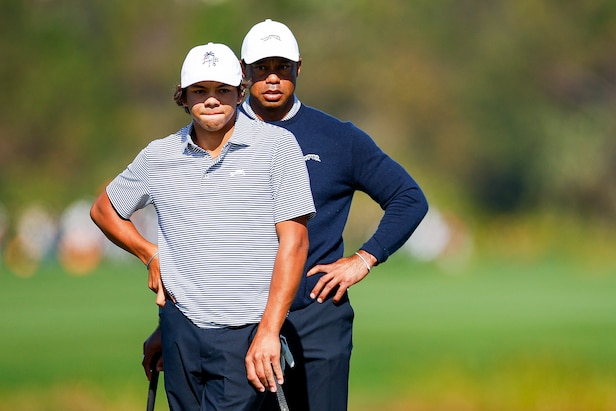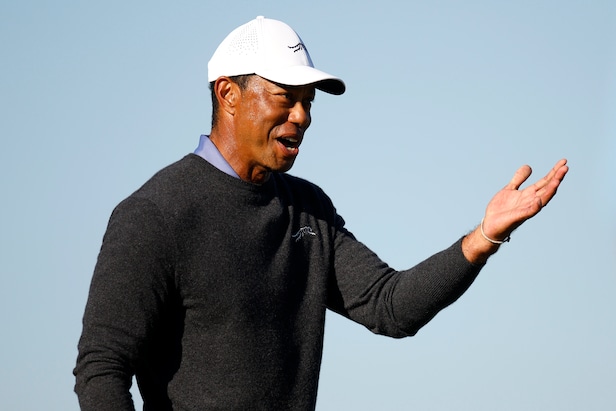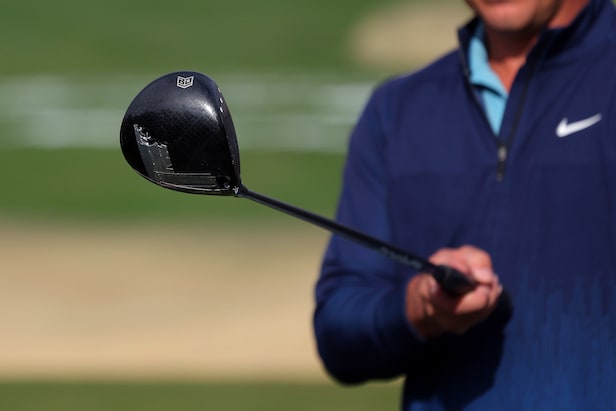Can Rory McIlroy find himself again in march toward joining all-time greats? – Australian Golf Digest

- by Admin
- May 10, 2024
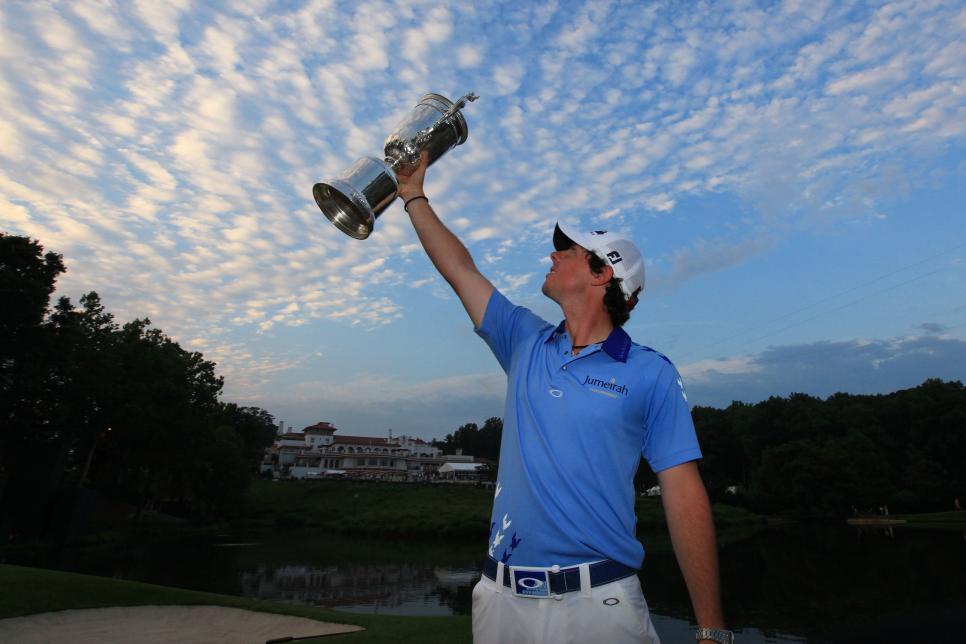
All competitive golfers long for the sensation of freedom, some kind of temporary immunity from the never-ending threat of negative thoughts that tighten muscles and maddeningly steal a player’s relaxed best.
Even Rory McIlroy, that paragon of the unencumbered full wallop and the perfectly balanced finish, shares that wish. And maybe—because his mega talent brings a commensurate degree of expectations, because his genial nature resists shutting out the public and press for a more single-minded focus, and because he misses and would love to recapture the momentous golf he could play when it was easier to feel free—especially Rory McIlroy.
While the current World No. 2’s place in the World Golf Hall of Fame was assured when he won four major championships in four years to join Jack Nicklaus and Tiger Woods as the only golfers to have that many before the age of 26, McIlroy’s actual playing peak was reached with the first two of those victories, the 2011 U.S. Open at Congressional and the 2012 PGA Championship at Kiawah Island.
MORE: 9 questions and answers about Rory McIlroy’s PGA Tour board drama
Both were eight-stroke romps with identical 72-hole totals of 16-under-par 268, but the 22-year-old McIlroy’s brilliance at Congressional seemed nothing short of dawning genius, the major championship performance most reminiscent of the 21-year-old Woods winning the 1997 Masters by 12 shots. That indelible image of McIlroy in full flight remains the reason why—13 years later—his potential is still more intriguing than his prodigious accomplishments.
“I just think how free-flowing it was,” McIlroy told NBC’s Smylie Kaufman last month as he intently watched the iconic replay of the 6-iron swing on the final day of that U.S. Open that nearly produced a hole in one, causing Johnny Miller to rhetorically enthuse “How good are you?” “I still think it’s the best four days of golf I think that I’ve ever played. How much I cleared my hips. How much I just released it … the more free I can play, usually the better it is.”
MORE: Want to know what you can steal from Rory McIlroy’s swing?
The moment and the feat have aged well. And the Northern Irishman’s Congressional/Kiawah dynamic double up with its cumulative margin of victory by age 23 comprises a more explosive career blastoff than those of Gene Sarazen, who at age 20 won two majors; of Nicklaus, who captured his third major at 23; and of Jordan Spieth, who got two in 2015 at age 21. The only stripling start that outdoes McIlroy goes back to Young Tom Morris, who beginning at age 17 in 1868, won four straight Open Championships by a total of 29 strokes.
Rory McIlroy hoists the U.S.Open trophy after his eight-shot victory at Congressional in 2011.
David Cannon
But if McIlroy is ever to achieve a place among the game’s all-time greats, he will have to win more majors. A Masters victory would make him only the sixth player to complete the career Grand Slam. But even with a Masters, McIlroy would need two more major wins, and without it, at least three more, to be considered in the top 10.
To do so, recapturing the sense of freedom he felt at Congressional will be vital, a feeling that increased expectations helped make elusive after his two runaways. By following so closely behind Woods at a time when Tiger had lost his own major mojo, McIlroy was expected to assume Woods’ mantle and do Woodsian things.
Which he did by coming back to win two more majors in 2014, but without quite the same magic. In the final round of the Open Championship at Hoylake, McIlroy saw a seven-shot lead get cut to two with five to play, but he held his nerve to win. A month later, at the PGA at Valhalla—site of this week’s PGA—he came back from three behind Rickie Fowler at the turn, fueled by an eagle at the 10th hole, and hung on with a shaky par 5 on the 18th in the gathering darkness to win by one.
After that victory, something changed. Remarkably, in the 10 calendar years since Valhalla, McIlroy is 0-for-35 in the majors. He has 20 top-10s, including 10 top-fives—both the most of any player in that period.
More PGA Championship preview stories 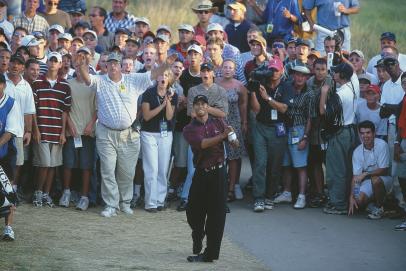 PGA Championship Was Tiger Woods’ mysterious bounce at the 2000 PGA Championship caused by fan interference? Investigating one of golf’s greatest conspiracy theories
PGA Championship Was Tiger Woods’ mysterious bounce at the 2000 PGA Championship caused by fan interference? Investigating one of golf’s greatest conspiracy theories 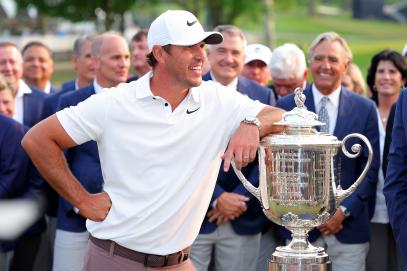 PGA Ranking PGA Championship picks 2024: The 13 best bets to win at Valhalla
PGA Ranking PGA Championship picks 2024: The 13 best bets to win at Valhalla  Until Valahalla Golf Digest Logo PGA Championship 2024: The five holes that will decide who wins at Valhalla
Until Valahalla Golf Digest Logo PGA Championship 2024: The five holes that will decide who wins at Valhalla
Even though McIlroy’s early feats prompted commentators to project him as a historically great player, it’s fair to ask if he has been good enough to be measured against that most unforgiving standard. As the Bill Parcells axiom states, “You are what your record says you are.” If McIlroy were to stall in the ensuing years, he would be far from the first player with all-time great possibilities who peaked early. Although Ben Crenshaw won a second Masters at age 43, he once said that he played his best golf when he was around 18, “when I didn’t think. I just did.”
Jack Nicklaus believes McIlroy will win more majors, but mentally might need to alter how he gets to playing “free”. “Maybe he tries to keep himself too relaxed,” Nicklaus said on Nick Faldo’s podcast last year. “I was never relaxed. I always wanted to be on point, every shot. You can’t get relaxed and sort of enjoy. You can’t enjoy the round. You’ve got to play the round, and when you play the round well, that’s your enjoyment … The pressure is what you live for.”
Physically, most agree McIlroy is already an all-time talent. There’s no dispute that he is one of the best drivers of the ball the game has ever seen. Since 2010, McIlroy has never ranked worse than sixth on the PGA Tour in strokes gained/driving, and he’s been first or second five times.
But it’s possible that driving virtuosity has been a trap for McIlroy. “The foundation of my game is my driving,” he said in 2015. “When I drive the ball well, I win golf tournaments.”

Rory McIlroy, shown at the 2023 Masters, has periodically struggled with his putter and short irons.
Christian Petersen
Which has proved not to be necessarily true, as McIlroy has too often been undone by untidy golf even when driving it well. Nick Faldo, whose six majors McIlroy has a goal of surpassing in order to be regarded as Europe’s greatest all-time player, believes McIlroy has emphasized his driver play at the expense of mastering the short irons and wedges, and it has cost him.
“On average he’s the best driver in the world,” says Faldo, “but from 9-iron on down, he’s often been terrible for a player of his talent. Far too often, I’ve seen him hit it 320 down the middle, then flare or pull wedge to 50 feet and three-putt it. That is a killer. It does more damage than just on the scorecard. It eats away at your self-belief and trust. Rory knows he’s wasted dozens if not hundreds of shots over the years with his short irons. Now he’s 10 years without a major. There’s a definite connection. And a lot of scar tissue.
“I would tell Rory to go to the range, hit maybe four drivers just to keep the feel, then really concentrate on 8-iron on down. If he became really good with those clubs, golf would be a piece of cake. That’s what Tiger did. He was a poor wedge player when he first came out, hitting it too high and lacking distance control, but he turned that weakness into a strength and immediately everyone was in trouble. Dustin Johnson did much the same thing a several years ago it got him to No. 1 and two majors. That’s what Rory has to do. Find the technique, find the trust, whatever it takes.”
McIlroy has worked on his short-iron and wedge approaches, and his strokes-gained statistics have shown improvement, but he concedes that part of his game remains a work in progress. He’s well aware that his four major victories all came on course that, because of bad weather, were wetter and softer than usual, and thus were more forgiving. “A firm, fast Augusta or a typical U.S. Open setup is probably the most difficult test for me,” he said in 2015. “So if Augusta is fiery, winning there would get me closer to being a complete player, because I don’t think I’m there yet.” His second-place finishes since then in dry conditions at the 2022 Masters and the 2023 U.S. Open have been encouraging.
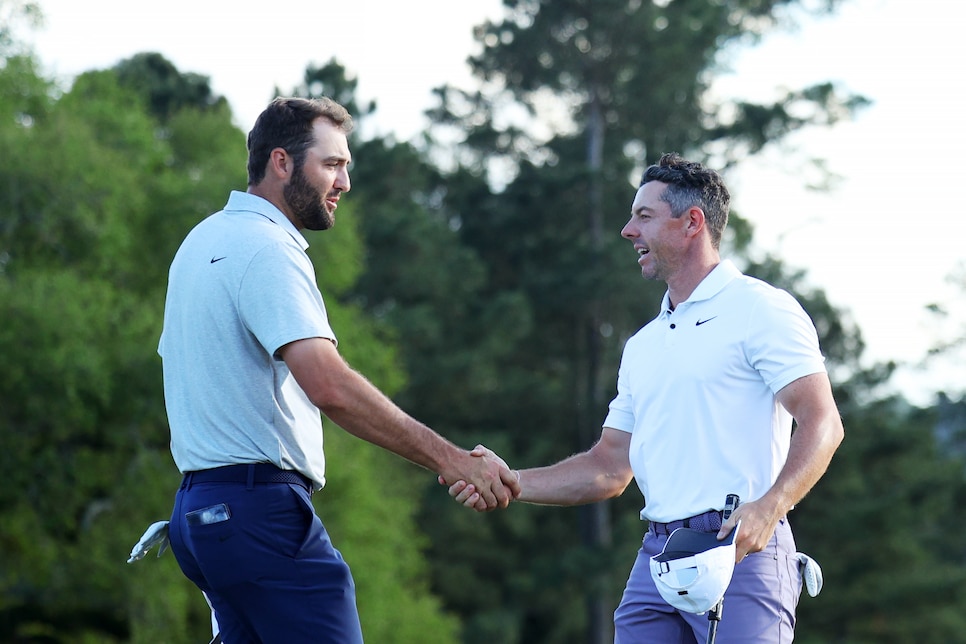
In a display of Scottie Scheffler’s current dominance, he and Rory McIlroy played together in the first two rounds of the 2024 Masters, and in Scheffler’s win, he beat the World No. 2 by 15 shots.
Andrew Redington
As McIlroy works to become more well-rounded, Scottie Scheffler’s overall mastery through the bag has left no doubt who at the moment is the better golfer.
Scheffler’s emergence as an emphatically dominant No. 1 marks the first time since Woods’ late prime that McIlroy, who has spent 126 weeks at No. 1 in his career, has been so overshadowed in overall skill by another player. But as is his wont, he has handled the success of a rival with aplomb.
“Scottie could end up with the best ball-striking season of all time,” No. 2 said in honest admiration after the two played together at the Masters. “He hits the ball as good, if not better, than Tiger hit it in 2000, which is the benchmark for all of us.”.
Scheffler went through a serious putting slump last year that cost him some victories, but he seems to have rectified that, in part because of following McIlroy suggestion that he switch to a mallet. Stats and peer review would give the edge to McIlroy with the driver and the putter. But Scheffler is currently better than McIlroy through the rest of the bag, as well as short game and course management, a reality that has brought more clarity to some of the points McIlroy has long heard from critics.
More PGA Championship preview stories 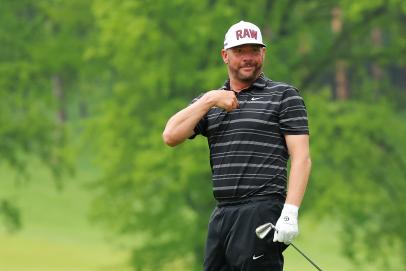 PGA Championship Michael Block on his ‘Year of Blockie’ and what happens when your 15 minutes of fame are up
PGA Championship Michael Block on his ‘Year of Blockie’ and what happens when your 15 minutes of fame are up 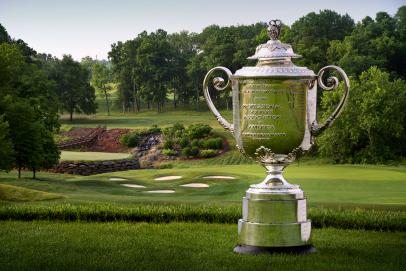 PGA Championship 101 PGA Championship 2024: Answering the most frequently asked questions about the year’s second major
PGA Championship 101 PGA Championship 2024: Answering the most frequently asked questions about the year’s second major  The More You Know For the last time, the PGA Championship is NOT run by the PGA Tour: An idiot’s guide to who runs what in golf
The More You Know For the last time, the PGA Championship is NOT run by the PGA Tour: An idiot’s guide to who runs what in golf
“If you look at Scottie compared to the rest of the field, the amount of bogey-free rounds he plays is phenomenal,” said McIlroy, in an apparent example “when the student is ready, the teacher will appear.” “And that’s the secret to winning major championships and winning big-time golf tournaments. It’s more limiting the mistakes rather than making a ton of birdies.”
Scheffler isn’t the only source of motivation and McIlroy prepares for his return to Valhalla.
In his closest chances at majors since Valhalla, McIlroy has played solidly but with a lack of timely thrust and parry. At last year’s U.S. Open he began a stroke behind Wyndham Clark and frustratingly ended up there as the two matched closing 70s. He lost by two at the 2022 Open at St. Andrews, where he had a three-shot lead with eight to go over playing partner Cameron Smith. But McIlroy, who hit all 18 greens but only birdied one of the Old Course’s short par 4s, parred in while Smith came home in 30 for a 64.
McIlroy’s major drought is all the more puzzling because he’s had plenty of success in other events since 2014, winning 16 times on the PGA Tour, including a Players Championship and three FedEx Cups, to bring his career victory total to 25.
But because of the spurt that began at Congressional, McIlroy will always be measured most by majors. Now having just turned 35, history says they will become harder for him to win. Twenty players have won five or more majors, representing 153 victories, with less than a third (46) of those won by players 35 or older. Ben Hogan had eight of those wins, followed by Sam Snead and Nicklaus with six, Phil Mickelson with five, and Gary Player with four. Meanwhile, Sarazen, Tom Watson, Arnold Palmer, Seve Ballesteros, Byron Nelson and Bobby Jones all had zero.
The clock is also running against McIlroy winning another major after so long. The longest span between major victories is 11 years—achieved by Henry Cotton, Julius Boros, Hale Irwin, Ben Crenshaw, Woods. McIlroy is doubtless capable of winning multiple majors going forward, but the notion that him winning another major is inevitable has gone from conventional wisdom to overstatement.
When Brooks Koepka won last year’s PGA at Oak Hill, he passed McIlroy in majors, 5 to 4, and it was a rude awakening. “F—,” McIlroy said on the second season of the Netflix produced “Full Swing,” “someone in my era has got more majors than I have.” The cameras later caught McIlroy calling out to Koepka in the parking lot to congratulate him, but no doubt a fuse was lit.
McIlroy had already been agitated about having ground out a T-7 in the championship with not enough game to do much better. “My technique is nowhere near as good as it used to be,” he said. “Like I feel good enough to be, like f—–g top 10 in my head, but good enough to win.”
McIlroy was hardly any happier at the Masters, where he finished T-22 in his 10th attempt to win the career Grand Slam, but his competitive edge had been sharpened.
Then two weeks later, he teamed with close friend and countryman Shane Lowry to win Zurich Classic in New Orleans, a genuinely joyful experience. McIlroy had come to the event to help strengthen the field at a time when PGA Tour leaderboards have often been filled with players lacking name recognition and to have a good time in a lively town with a compatriot and perhaps even bring home a win.
Down the stretch on the final day, McIlroy looked engaged and energized, in his wheelhouse on a shared mission. He was making clutch putts with pace, bombing drives and easing Lowry’s struggles with pats on the back and laughter. It recalled what Michael Bannon, McIlroy’s longtime instructor, fondly recalls about those early days: “Always a happy man, Rory.”
“The reason that Shane and I both started to play golf is because we thought it was fun at some stage of our life,” said McIlroy. “Reinjecting a little bit of that fun back into it in a week like this, it can always help.”
Perhaps all the forces roiling inside McIlroy at the moment, and especially the fun, will help him find that long lost sensation of freedom in a major championship as he returns to Valhalla.
This article was originally published on golfdigest.com
The Latest News
-
December 23, 2024Australian tennis star Purcell takes on voluntary provisional suspension for breaking anti-doping rules
-
December 23, 2024Wimbledon champion accepts ban for anti-doping breach just months after winning US Open
-
December 23, 2024Australian tennis star Purcell takes voluntary suspension over anti-doping breach
-
December 23, 2024Max Purcell to miss Australian Open after accepting ban for anti-doping breach
-
December 23, 2024Australian tennis star Purcell provisionally suspended for doping


